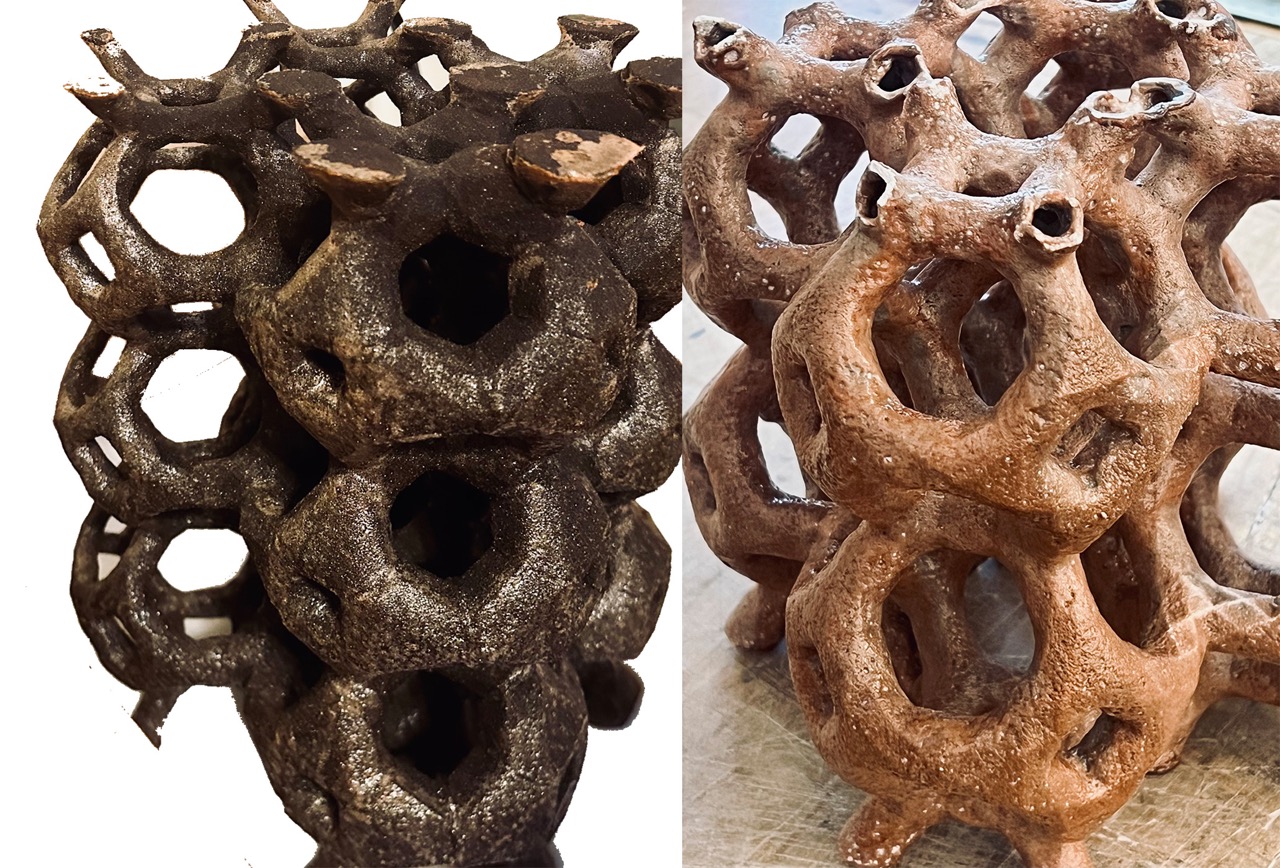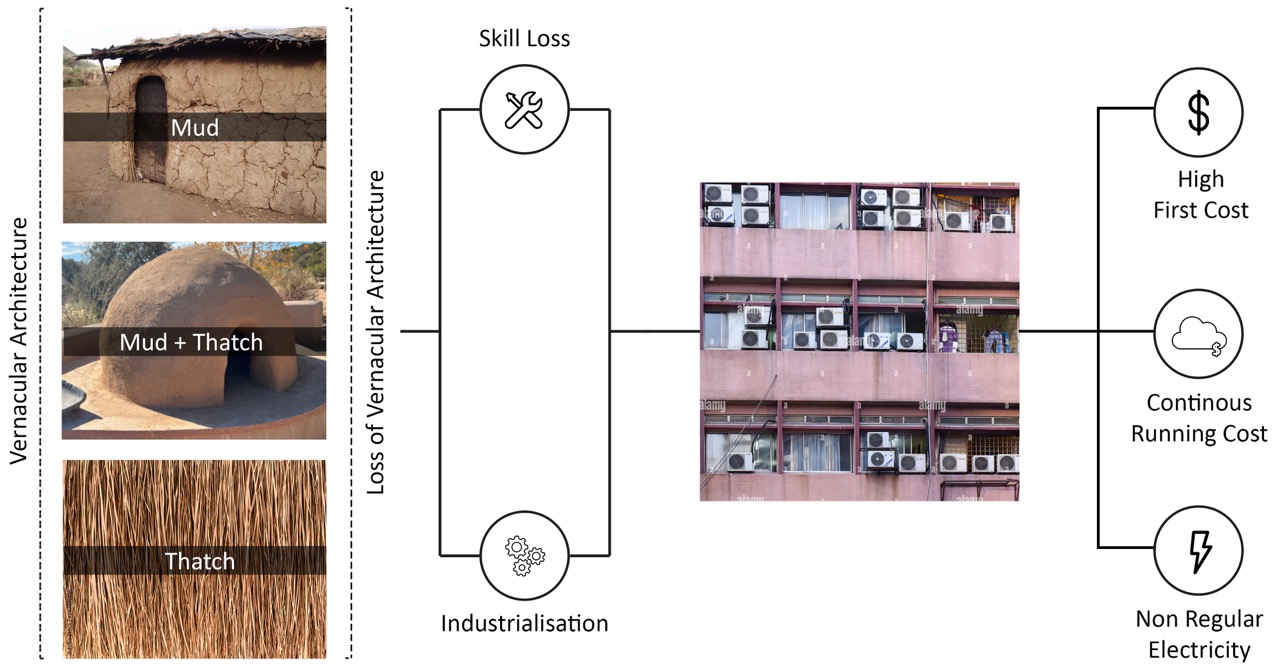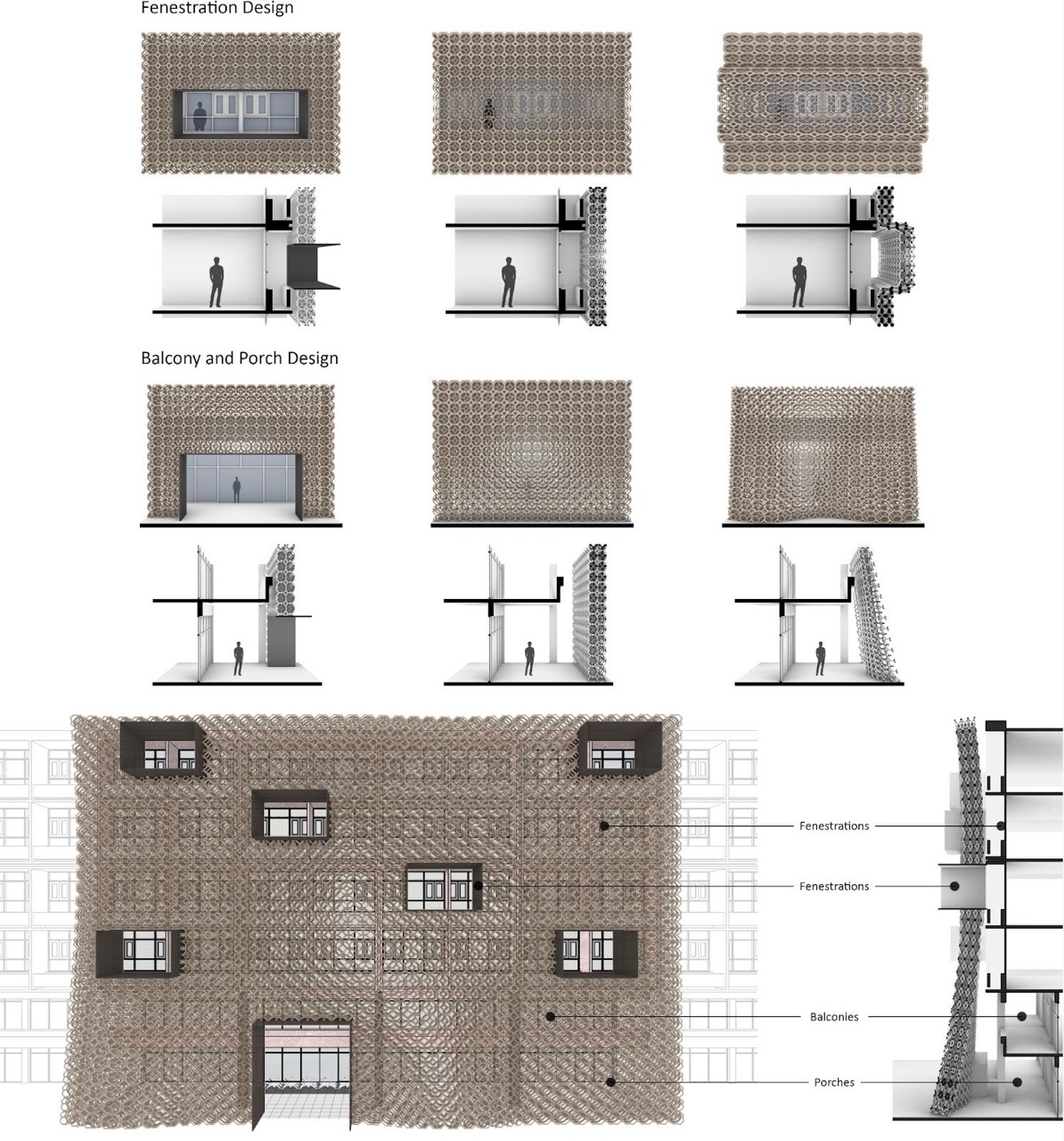Building Facades as Passive Dehumidifiers: Integrating Isothermal Membrane Assisted Dehumidification (IMAD) for Enhanced Thermal Comfort
Nandan Bhusry (2024)
In hot and humid climates, prolonged periods of discomfort arise due to elevated temperatures and humidity levels, posing risks such as hyperthermia and mortality (Mora et al., 2017). Human comfort is influenced by both external factors like temperature and humidity, and internal factors such as metabolic heat. While perspiration serves as the body’s natural cooling mechanism through evaporative cooling, high relative humidity inhibits efficient sweating, leading to heat accumulation within the body (Matthews, 2018).

Traditionally, vernacular architecture in tropical regions utilized hygroscopic materials like mud and thatch(Little & Morton, 2001; Monzur, 2018), which naturally dehumidified ventilation air as it circulated within buildings (Brager et al., 2011). However, the shift towards industrialized concrete construction has resulted in a reliance on mechanical air conditioning, displacing these traditional passive cooling methods (Korachy, 2020).
Inspired by passive dehumidification techniques from vernacular architecture, the air conditioning industry has introduced Isothermal Membrane Assisted Dehumidification (IMAD) technology. This technology utilizes material properties and chemical composition to extract moisture from humid air without additional energy consumption (Qu et al., 2018). IMAD holds significant potential as an efficient cooling strategy, particularly in hot and humid climates, where dehumidification plays a crucial role in enhancing thermal comfort.
While membrane selectivity is a well-established concept in various natural and industrial applications, including HVAC systems (Baker & Low, 2014; D. T. Bui et al., 2016; T. D. Bui et al., 2015, 2015; Woods, 2014; L. Zhang, 2005; L.-Z. Zhang, 2012), its integration into architectural design still needs to be explored. This thesis aims to investigate the integration of IMAD technology within building envelopes, effectively transforming architectural facades into functional conditioning and dehumidification systems. By exploring the synergy between passive design principles, modern materials science, and building facade assemblies, this research seeks to propose innovative solutions for the architectural envelope, with the promise of reducing latent heat, a key driver of air conditioning demand in hot and humid climates.

Inspired by Indian Jaali systems, the research explores the design of three-dimensional hygroscopic lattice scaffolds for integration into building facades. These lattice structures aim to dehumidify the airstream of natural ventilation brought in through fenestrations and openings. Through investigations into lattice morphology, topology, and materials, the dehumidification potential of this system at a building scale will be examined.
The overarching goal of this research is to test IMAD application on a building scale, deploying low-tech principles within a high-performance framework to enhance occupant comfort and well-being in extreme climates. Additionally, this research aims to promote passive survivability, contributing to a more sustainable and resilient built environment. Additional images can be found here.

Nandan Bhusry would like to thank their faculty advisor Prof. Dana Cupkova
This project was made possible with support from FRFF Grant #2024-038
